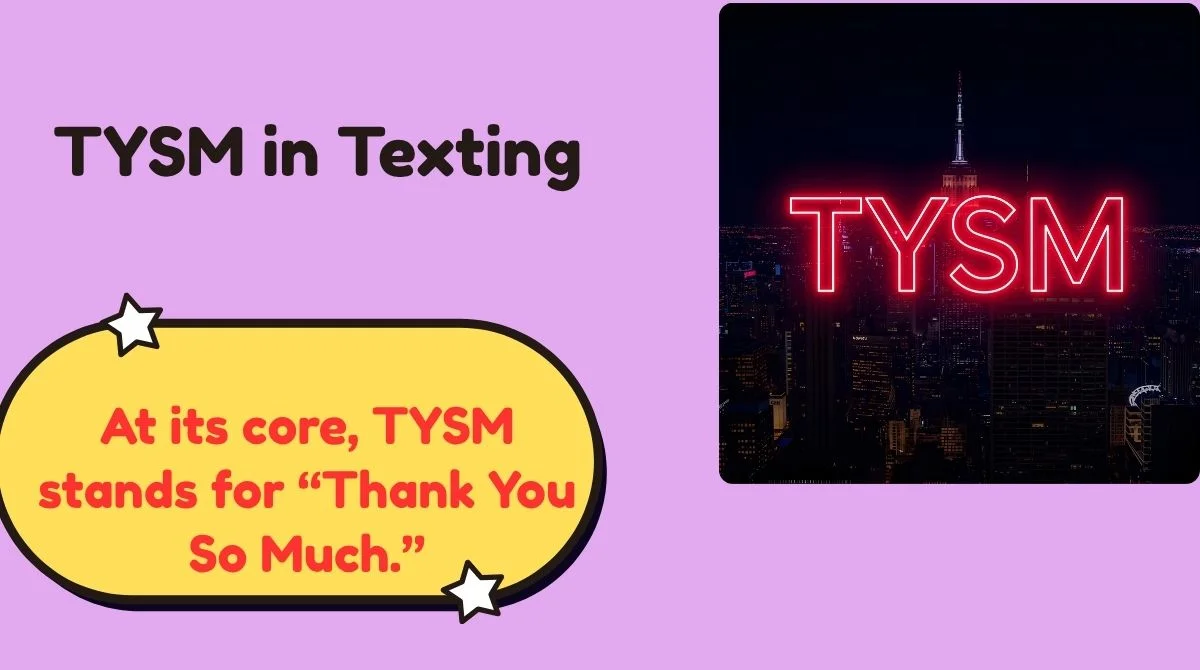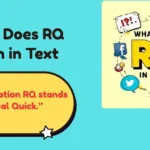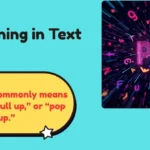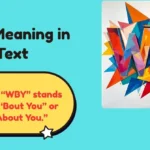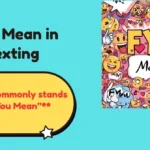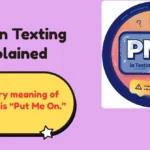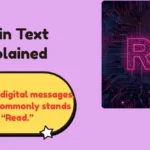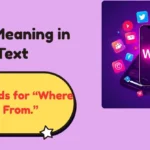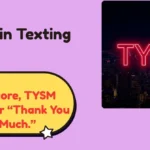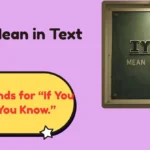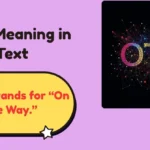Texting has its own language — a fast, expressive, emoji-filled shorthand that helps people connect quickly. Among these abbreviations, one stands out for its warmth and simplicity: TYSM.
You’ve probably seen it in a friend’s text or a comment on Instagram and wondered, “What does TYSM mean in texting?” or “Is it okay to use in professional chats?”
This guide dives deep into what TYSM really means, how to use it appropriately, and the best alternatives when you want to sound more personal, professional, or sincere. Let’s get started!
What Does TYSM Mean in Texting?
At its core, TYSM stands for “Thank You So Much.”
It’s one of the most common acronyms used across texting, messaging apps, and social media.
Quick Facts:
| Acronym | Meaning | Tone | Common Platforms |
|---|---|---|---|
| TYSM | Thank You So Much | Friendly / Warm | WhatsApp, Instagram, Snapchat, Email |
| TY | Thank You | Neutral | General texting |
| TYVM | Thank You Very Much | Polite / Slightly Formal | Email, Work Chat |
| TYSFM | Thank You So Freaking Much | Playful / Casual | Friends, Social Media |
The phrase became popular in the early 2000s as texting culture grew. Instead of typing the whole sentence, users started shortening it for convenience — especially when character limits were tight.
Now, TYSM is everywhere — from TikTok comments to email threads. It expresses gratitude with a casual, friendly vibe.
Example Uses:
- “TYSM for the birthday wishes! 🎂”
- “You really helped me out today — TYSM!”
- “TYSM for your kind words 💖”
It’s short, heartfelt, and fits the fast-paced world of digital communication perfectly.
Is TYSM Professional or Too Casual?
Good question — and one worth asking before you hit send.
TYSM sits in the middle of the formality spectrum: friendly, yet polite enough for many semi-professional contexts.
When TYSM Works Well:
✅ Informal work chats on Slack or Teams
✅ Emails to colleagues you know personally
✅ Social media replies and DMs
✅ Group messages or community channels
When to Avoid TYSM:
🚫 Job applications or cover letters
🚫 Formal business proposals
🚫 Client introductions or legal communication
Let’s break it down with a quick table:
| Phrase | Professionalism Level | Tone | Best Used In |
|---|---|---|---|
| TYSM | Moderate | Warm / Friendly | Internal chats, informal emails |
| Thank You So Much | High | Polite / Sincere | Business emails, formal notes |
| Thanks! | Casual | Light / Friendly | Quick texts, replies |
| Appreciate It | Moderate | Sincere / Grateful | Team messages, LinkedIn comments |
So yes — you can use TYSM in professional contexts, as long as the relationship and tone fit. If you’re unsure, go with the full phrase “Thank you so much.” It’s always safe.
Common Mistakes When Using TYSM
Even something as simple as “TYSM” can be misused. Here are a few mistakes to avoid:
1. Overusing It
If you say TYSM after every tiny thing, it can lose its meaning.
Better: Save it for genuine gratitude.
2. Adding the Wrong Emoji
Emojis can completely change the tone of your message.
Example:
- “TYSM 🙄” → sounds sarcastic
- “TYSM 😊” → feels warm and thankful
3. Using It in the Wrong Context
Avoid using TYSM when tone or culture calls for something more formal. For example, sending TYSM to a potential employer might come off as too casual.
4. Typing Errors
Sometimes people type “Tysm” or “tySm.” While that’s not wrong, all caps (TYSM) reads more clearly.
💡 Tip: When in doubt, match the tone of the person you’re replying to. If they write formally, mirror that.
Alternatives to TYSM (and When They Fit Best)
If you use TYSM often, it’s good to mix it up. Below are great alternatives — each with a unique tone and perfect context.
| Phrase | Tone | Ideal Context | Example |
|---|---|---|---|
| Thank You Kindly 🙏 | Polite / Warm | Formal thanks or older audience | “Thank you kindly for your time.” |
| I Truly Appreciate It 🌟 | Heartfelt | Professional or personal | “I truly appreciate your help today.” |
| Thanks So Much 😊 | Friendly | Casual conversation | “Thanks so much for picking me up!” |
| Many Thanks 💬 | Polite | Work emails | “Many thanks for the update.” |
| Much Obliged 🤝 | Old-fashioned charm | Polite tone | “I’m much obliged for your assistance.” |
| Thanks a Ton 🧡 | Energetic | Close friends | “Thanks a ton for the tickets!” |
| Can’t Thank You Enough 🙌 | Emotional | Deep gratitude | “I can’t thank you enough for your support.” |
| Cheers! 🍻 | Friendly / British | Texts, casual goodbyes | “Cheers for the help!” |
| Grateful Beyond Words 💖 | Sentimental | Emotional situations | “Grateful beyond words for your kindness.” |
| Appreciate It Greatly 🌟 | Balanced | Formal yet warm | “Appreciate it greatly, truly.” |
| Sincere Thanks 🤲 | Respectful | Notes, acknowledgments | “Sincere thanks for your generosity.” |
| Thanks a Bunch 🌼 | Cheerful | Lighthearted messages | “Thanks a bunch for covering my shift!” |
| Forever Grateful 🕊️ | Emotional | Meaningful moments | “Forever grateful for your love.” |
Quote to Remember:
“The words may be short, but the feeling of gratitude is always deep.”
How to Pick the Right Phrase: Tone, Platform & Relationship
Choosing between TYSM and its alternatives depends on who you’re texting and where you’re texting them.
Tone
- Formal: “Thank you so much,” “Sincere thanks,” “Appreciate it greatly.”
- Friendly: “Thanks a ton,” “Cheers,” “Thanks so much.”
- Emotional: “Forever grateful,” “Can’t thank you enough.”
Relationship
- Close friends or family: TYSM, Thanks a ton, Cheers
- Coworkers: Many thanks, Appreciate it greatly
- Boss or clients: Thank you kindly, Sincere thanks
Platform
| Platform | Recommended Phrase | Notes |
|---|---|---|
| Email (formal) | “Thank you so much” / “Appreciate it greatly” | Avoid abbreviations |
| Slack/Teams (work chat) | TYSM / Many thanks | Keep tone polite but light |
| Text message | TYSM / Thanks so much | Casual, friendly |
| Instagram / TikTok | TYSM 💖 / Thanks a ton 🧡 | Add emojis naturally |
Case Study:
A marketing executive used “TYSM 😊” in a client email and received feedback that it felt too informal. After switching to “Thank you so much for your support,” her responses improved. The lesson? Adjust tone to fit the audience.
TYSM in Pop Culture and Digital Trends
From influencers to brands, TYSM has taken over captions, stories, and even memes.
Examples from Pop Culture:
- Celebrities often reply to fan comments with “TYSM for the love 💕.”
- You’ll see #TYSM trending during award seasons or fandom events.
- Brands use it in community posts: “TYSM for 1 million followers!”
Digital Trend Insight:
- On TikTok and Instagram, TYSM is part of positive micro-language — short affirmations that express gratitude and connection.
- Emojis often amplify it. For instance:
- “TYSM 💖💖💖” → highly expressive, friendly
- “TYSM 🙏” → respectful, formal gratitude
As slang evolves, new variations appear — TYSFM (Thank You So Freaking Much) or TYVSM (Thank You Very, Very Much). But TYSM remains the most universal and recognizable version.
TYSM vs Other Gratitude Acronyms
Not all gratitude acronyms are equal. Here’s how TYSM compares:
| Acronym | Full Form | Tone | Typical Use |
|---|---|---|---|
| TY | Thank You | Neutral | Everyday quick replies |
| TYSM | Thank You So Much | Warm / Sincere | Common in friendly chats |
| TYVM | Thank You Very Much | Polite | Emails, semi-formal |
| TYSFM | Thank You So Freaking Much | Playful | Close friends |
| ILYSM | I Love You So Much | Emotional | Family, partners |
Fun Fact: The use of TYSM surged 70% on Twitter (now X) between 2020 and 2024, especially during pandemic years when online communication increased globally.
Should You Keep Using TYSM in 2025?
Absolutely — as long as you use it mindfully.
It’s friendly, genuine, and short. But like any expression, its power lies in sincerity.
Pros of Using TYSM
- Easy to type and instantly recognizable.
- Conveys genuine gratitude.
- Works across texting platforms.
Cons
- Can appear overly casual in professional settings.
- Loses meaning when overused.
- Tone can be misread without context.
So, use TYSM when it feels natural — and switch to fuller expressions when you want to sound more intentional.
TYSM Etiquette Checklist
Before sending that next “TYSM,” run through this quick checklist:
✅ Use with people you know well.
✅ Pair with emojis thoughtfully.
✅ Avoid in super formal writing.
✅ Replace occasionally with full phrases.
✅ Be genuine — don’t use it automatically.
FAQs About TYSM in Texting
What does TYSM mean in texting?
It means “Thank You So Much.” It’s a casual, heartfelt way to express gratitude quickly in digital conversations.
Is TYSM rude or sarcastic?
No, not by itself. It’s warm and friendly. But adding the wrong emoji (like 🙄) or tone can make it sound sarcastic.
Can I use TYSM in business emails?
Only in informal internal emails or Slack messages. For external communication, write the full phrase “Thank you so much.”
What’s the difference between TY and TYSM?
TY = Thank You (short and neutral).
TYSM = Thank You So Much (stronger and warmer tone).
Is TYSM still popular in 2025?
Yes — it’s one of the most commonly used gratitude acronyms online, especially on TikTok, Instagram, and messaging apps.
Final Thoughts
Even in the digital age, saying thank you still matters. Whether you write TYSM, Thanks a ton, or a full Thank you so much, what counts is the sincerity behind it.
Language keeps evolving, but kindness never goes out of fashion. So go ahead — drop a TYSM in your next message, but let it come from the heart. ❤️
“Gratitude turns what we have into enough.” — Anonymous
